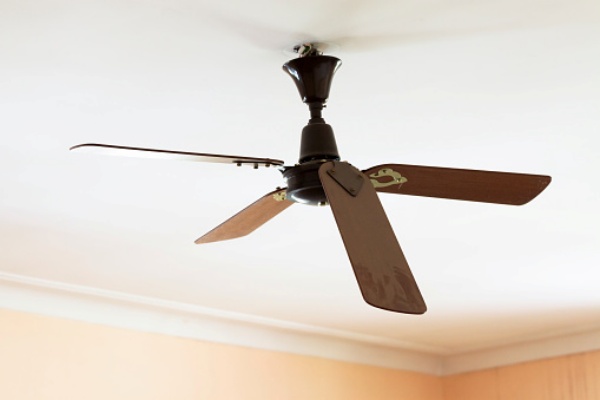
Why Ceiling Fan Makes Noise
Most homeowners would agree that a noisy ceiling fan is one of the most frustrating problems. In this blog post, we’ll explore why your ceiling fan might be making noise and offer some tips on how to fix the problem. We’ll also discuss the benefits of using a ceiling fan, so you can decide if it’s worth dealing with the noise issue.
So here are the common reasons why ceiling fan makes noise and how to aid these causes.
Dirty Fan Blades
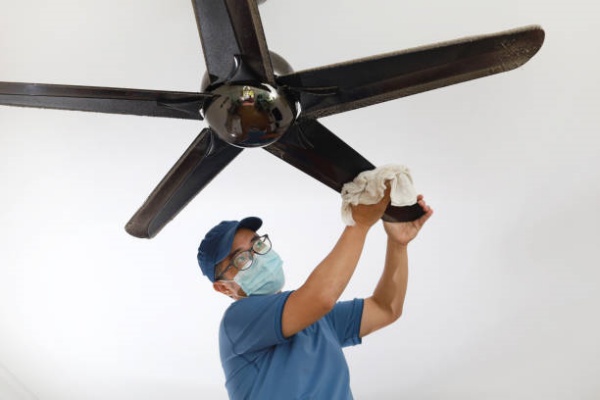
The dirt on your ceiling fan blades will make it wobbly and shakey, so clean both sides with a slightly damp cloth. The top side might be much messier than the bottom, so please avoid standing directly under them when cleaning! Make sure you wipe dry the blades, especially if your fan blades’ material is of wood, as this could cause molding or even ultimately damage the blades of your ceiling fan.
Wrapped or Damaged Blades
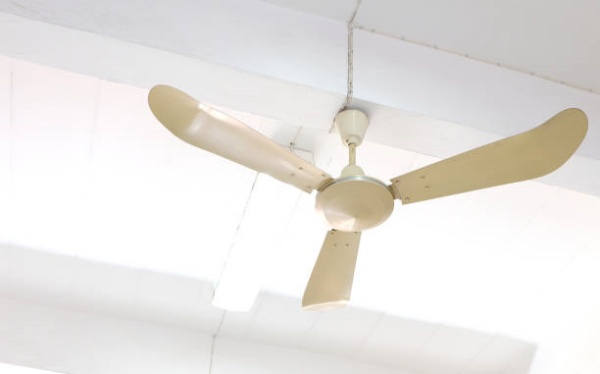
Straight blades are the key to a quiet, efficient fan. If your blade is wobbly or damaged, then you’ll likely hear clicking when turns turn on and off as well noise from shaking because of how unbalanced they feel in comparison with other straight sections within their frame; this can cause problems for both performance-wise but also lifespan if not taken care quickly enough and this puts pressure on the fan motor, which would result to possible motor burn out! Please check with the fan manufacturer before buying new fan blades to ensure they match.
Unbalanced Blades
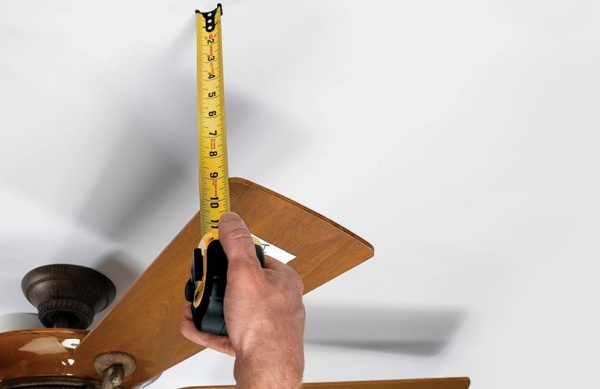
This is in connection to the first two possible reasons. A dirty fan blade can result in your ceiling fan making noise. Unbalanced blades can occasionally go without a clear cause, yet they may be to blame for your noisy fan. Fortunately, you need a basic balancing kit to balance the blades. Frequently, these come with brand-new fans, or you can purchase them from hardware stores.
Loose Ceiling Fan Light
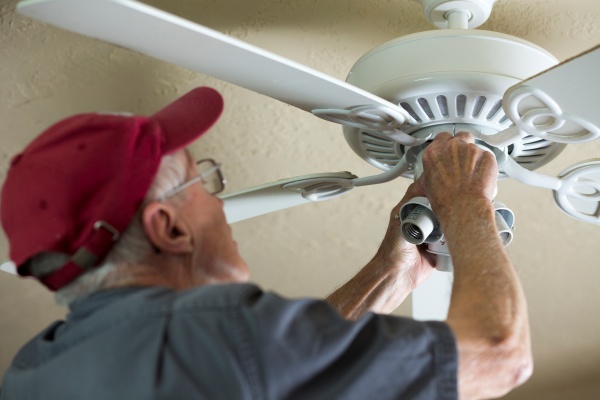
Check that all the globes, shades, bulbs, and other light fixture components are securely fastened if your fan has a light fixture. The majority of globes and shades are held in place with thumbscrews. You risk overtightening the screws and maybe cracking the glass if you use tools on these.
Loose Blades and Blade Brackets
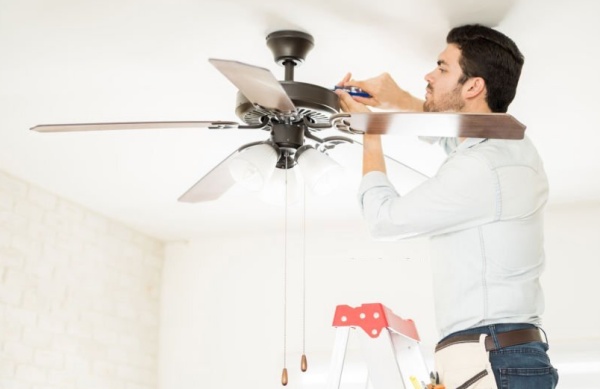
Attractive young handyman stepping on a ladder and fixing a ceiling fan
Several different elements of a ceiling fan might become loose and cause noise. The first thing to look for is where the blades attach to their brackets. Screws or other connecting devices, such as keyholes that fit over pins or studs on the bracket, are used to secure the blades to the brackets. Tighten any loose fastening system components. Screws or bolts are often used to secure the brackets to the motor unit. Tighten them as necessary using the appropriate screwdriver or wrench.
Motor Cover not Positioned Properly
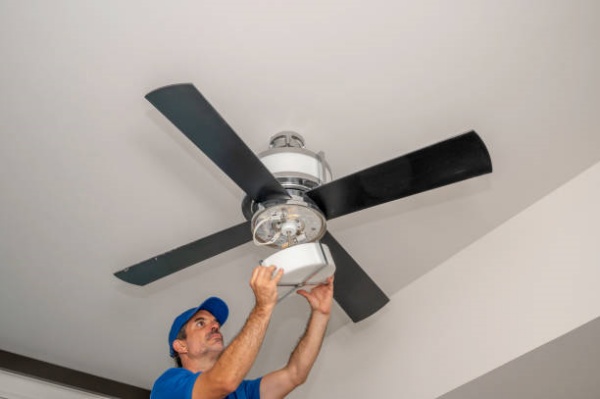
The fan’s blade brackets rubbing on the fan shroud or motor housing cover may generate an intermittent or scraping noise. Releasing the cover’s screws, gently changing the position of the cover, and retightening the screws will solve the problem. Check that the blade brackets are not rubbing against the cover.
Loose Fan Canopy
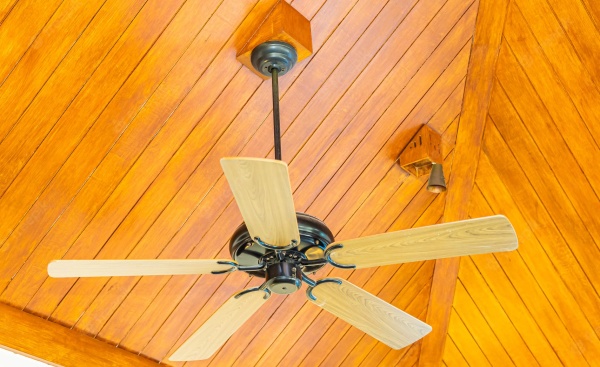
The fan’s canopy is the fan section that rests flat against the ceiling. It, too, may grow loose with time. You may need to tighten or loosen the screws on your canopy depending if you feel any movement. If so, do this with a screwdriver and then check which type of hole they are to tell how much force needs to be applied when tightening them down!
Lack of Lubrication
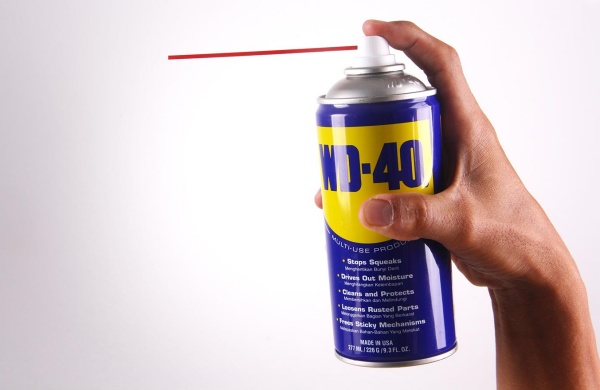
Poorly maintained inner parts might cause the noise emanating from your fan. Some fans require oil yearly, so check the fan’s handbook to see what your manufacturer suggests. Consult the product manual to determine the location of the fan’s oil hole and how to check the oil level. Add oil as needed, using the kind recommended by the manufacturer.
Loose Screws
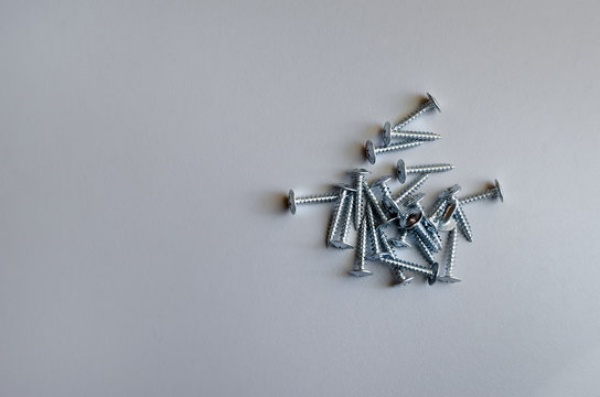
Sometimes when you install a new fan, the mounting screws might be loose and cause noise. Before checking these out-of-place fixtures, please turn off your home’s power by turning off its circuit at the service panel (breaker box). You will use metal tools to ensure the power is completely shut off. Remove the canopy cover by loosening the fasteners and sliding them down. To ensure the power is turned off, use a non-contact voltage tester to inspect the fan’s wiring. Then, using a screwdriver, tighten the screws that secure the fan’s mounting bracket to the electrical box in the ceiling.
Common Noises
Ceiling fan noises come in a variety of varieties. Fortunately, most problems may be resolved without replacing the ceiling fan. Among the most common noises are:
Clicking Sound
When the blades on your ceiling fan are loose, it can cause a clicking sound. However, this is an easy fix that only requires you to tighten up some screws! In addition, be sure all light fixture attachments are secure, too, because sometimes these fixtures may loosen over time and create noise when they click together while turning in their tracks.
Rattling Noise
If you’re noticing a rattling noise coming from your ceiling fan, there could be several causes. It may need minor adjustments or maintenance work to run smoothly again! Examine the interior of the light fixture for any loose screws that might have dropped into the glass globe and become lost. A loose or incorrectly placed bracket may be the source of rattling noises. If this is the case, you might need to replace the ceiling fan bracing.
Humming Noise
Ceiling fans may be making a humming sound; it could be due to frequency or electric issues associated with the remote control of either light switch. This usually happens when you set up dimmer switches for fans not only to change their speed but also to encourage more airflow, which can make this type of problem much worse if left unchecked long enough! The best repair solution for this is to hire an HVAC specialist.
Grinding Noise
The grinding or scraping noise that some fans make when running might indicate a problem with the blades. This will result in wobbly movement and may lead to other issues such as bearings overheating, so it’s essential not only for your safety but also because you don’t want any part of these problems. If cleaning and adjusting your blades did not work, the problem might be more significant than unbalanced blades. Oil may be required for the fan’s motor and bearings. In this case, it would be best to consult a professional electrician about repairing for you.
Conclusion
There are many reasons why a ceiling fan might make noise. It could be that the screws are loose, it needs an oil, or something is wrong with the blades. If you can’t fix the problem yourself, don’t worry! Some professionals can help. Ceiling fan noise doesn’t have to be a nuisance. You can run your ceiling fan smoothly and quietly in no time with some troubleshooting.
Last Updated on
- How Does Sunscreen Work to Protect Your Skin? - August 24, 2022
- How Sunscreen is Made - August 24, 2022
- How to Fix a Wobbly Ceiling Fan - August 19, 2022
